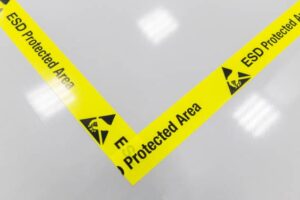Asbestos is a fibrous material that was commonly used in building materials before it was banned in the 1990s. While it is still found in older homes and commercial buildings, it can pose a severe health risk.
It is essential to hire a certified asbestos removal company in Adelaide for your safety, as using cheap labour may seem tempting. Still, the long-term consequences of exposure to asbestos fibres could be severe. For more certified asbestos removal company in Adelaide, check this out!
Safety First
 When asbestos is disturbed, it releases tiny fibres into the air that can be inhaled. These fibres can cause a variety of diseases, including lung cancer. These illnesses can be fatal if the exposure is prolonged.
When asbestos is disturbed, it releases tiny fibres into the air that can be inhaled. These fibres can cause a variety of diseases, including lung cancer. These illnesses can be fatal if the exposure is prolonged.
For this reason, if you are planning renovation work or a demolition project in an older building, you should first get the area tested for asbestos. This can be done through a simple sample. It is a good idea to dampen the area you will be sampling before you do so and wear an N95-type face mask.
Different licences are required for other types of asbestos removal. A class, A licence holder, can remove both friable and non-friable asbestos material. A class B licence holder can only remove non-friable asbestos. There is also a restricted class A licence that allows the removal of only fire doors and safes and no other type of friable asbestos. A competent person must supervise all workers. For more certified asbestos removal company Adelaide, check this out!
Licensed
Asbestos becomes dangerous when it is broken up or dislodged, releasing tiny fibres into the air. They can then be breathed in, causing severe illness. While asbestos is still commonly used in many parts of Australia, it’s essential to know the rules for handling it.
There are two types of licences for asbestos removal. The class A licence covers all types of friable asbestos, while the class B licence is limited to non-friable materials. PCBUs who commission both kinds of work must ensure air monitoring is undertaken and communicate the results.
To obtain an asbestos removal licence, PCBUs need to apply with the relevant workplace health and safety body. They must also notify SafeWork five days before the job starts. Licences need to be renewed every five years. There are several training courses available to help PCBUs understand the risks of working with asbestos.
Experienced
Asbestos was a popular building material in Australia until it was banned in the 1990s. This was due to its insulative and fireproofing properties. However, it was discovered that it posed several health risks. These include breathing problems and pleural thickening.
MPA Services offers asbestos inspection, testing and safe removal services for both residential and commercial properties. They are licensed and insured, offering fast, professional and cost-effective solutions. Their removal contractors have vast experience and work to the highest industry standards. For more certified asbestos removal company Adelaide, check this out!
The team at MPA Services is able to carry out all aspects of the removal process, including air monitoring and clearance certificates. They can also work with project managers to create a schedule that suits the site.
A specialist roofing company has the qualifications and licensing to handle dangerous materials. They can remove eaves linings, ceilings, and other contaminated areas of your home.
Accurate
Using a professional asbestos removal service ensures you get accurate quotes and a job done correctly. Various factors can affect the cost of asbestos removal, including the type of asbestos found and the size of the area being worked on. Generally, rates are quoted per square metre, but this can increase depending on the complexity of the work and the type of materials to be removed.
Textured paint and popcorn ceilings may contain asbestos fibres, as can cement moulded products like piping. These materials typically pose a health risk when they are damaged, deteriorated, or disturbed and can release asbestos into the air, which can then be inhaled by people who live or work in the building.